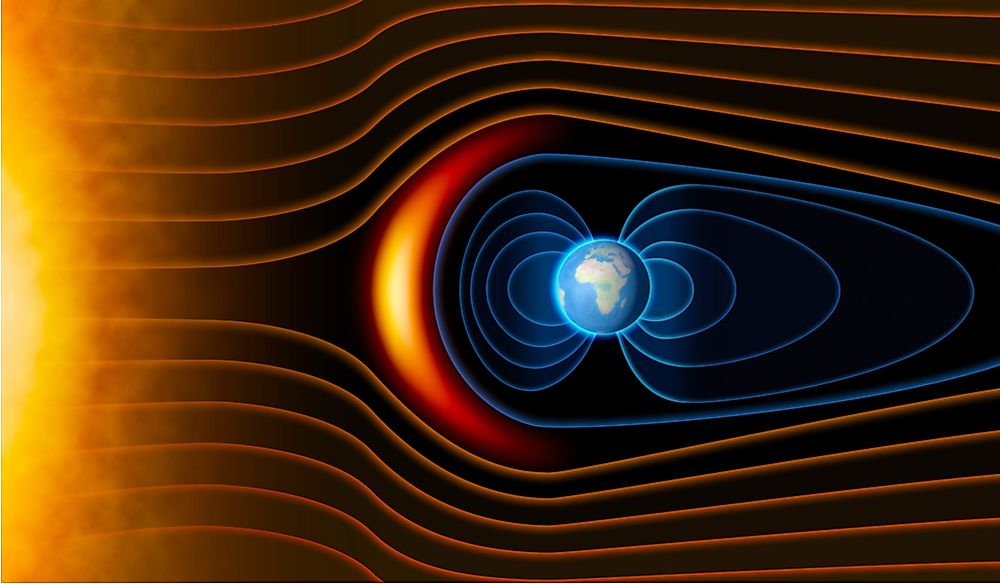What Is Earth's Magnetic Field?

Earth’s geomagnetic field extends from its inner core to space. The interior of the Earth generates the magnetic field through a process called geodynamo. The magnitude of the magnetic field ranges between 25 and 65 microteslas and is presented as a magnetic dipole tilted at approximately 11 degrees from the Earth’s rotational axis. The magnetosphere defines the extent of the field in space, and extends for tens of thousands of miles above the ionosphere and protects the planet from charged cosmic rays and solar winds that would otherwise strip the Earth’s atmosphere, including the ozone layer.
Magnetic Poles
The south pole of Earth's magnetic field is located in the northern hemisphere, near Greenland, and is known as the North magnetic pole because it attracts the needle of a compass. The north pole of Earth's magnetic field is located in Antarctica and is known as the South magnetic pole. The magnetic poles are not constant but move at a rate of 30 miles a year, which is slow enough for an ordinary compass to remain useful. Additionally, the poles reverse at irregular intervals, which averages several hundred thousand years.
Significance
The Earth's magnetic field deflects solar winds and keeps the ozone layer in place, therefore preventing ultraviolet radiation from reaching the surface of the planet. This is significant, as it is believed that solar winds stripped the atmosphere of Mars, rendering the planet uninhabitable. The magnetic field also directs compasses for navigational purposes. Some species of bacteria, pigeons, and aquatic animals use a sense called magnetoreception for navigation and orientation.
Dynamo Theory
The Earth is composed of a crust, silicate mantle, and an inner and outer core. The solid inner core has a temperate of about 5,730 °C, which is hot enough to keep the outer core in a liquid state. However, the inner remains in a solid state due to high levels of pressure. The outer core remains in constant motion due to convection and Earth's rotation. Convection occurs when heavy metals solidify in the inner core, while lighter metals are displaced to the outer core. The rotation of the Earth and convective motion produces the appropriate motion that is conducted to the surface and into space. Little is known regarding the actual process that leads to the formation of the magnetic field, but the basic concept includes the presence of a conducting fluid, a source of energy in constant motion, and a "seed" magnetic field to ignite the process.











